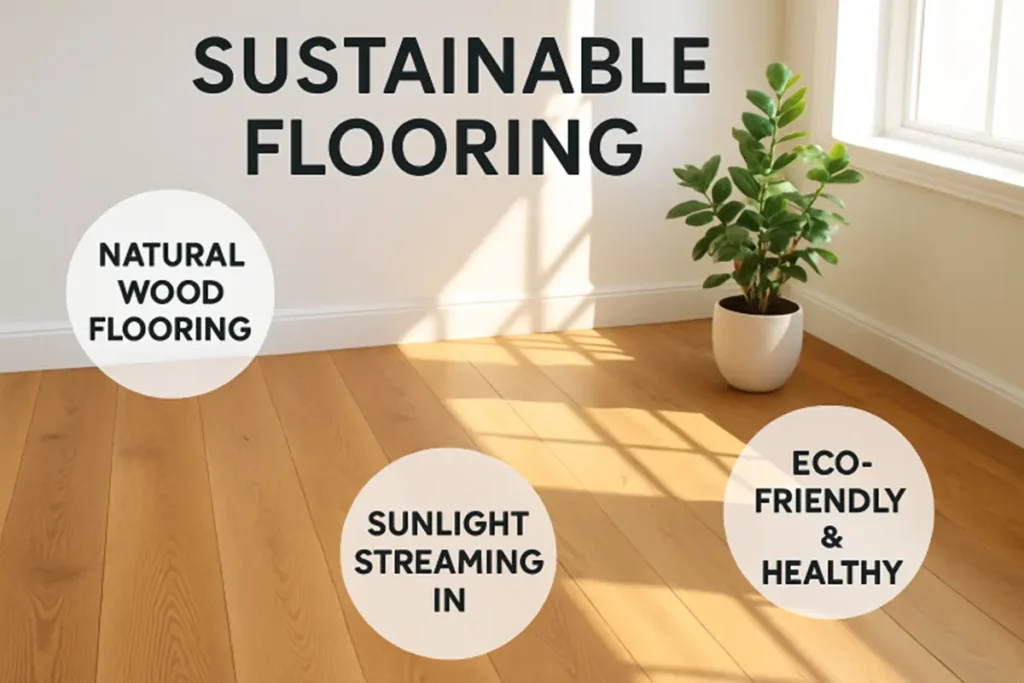Key Takeaways
- Sustainable wood flooring continues to surge in popularity due to its environmental and health benefits.
- Many homeowners and designers prioritize eco-friendly materials and manufacturing processes in their flooring selections.
- Choosing FSC-certified or reclaimed options helps the planet and often adds unique character to a space.
- Sustainable flooring trends highlight durability, low-VOC finishes, and innovative installation techniques.
- Education and research are critical; resources such as sustainable flooring ideas provide valuable guidance for making informed decisions.
Why Sustainable Wood Flooring Is Gaining Momentum
Sustainable wood flooring isn’t just a passing design trend—it’s transforming homes, businesses, and entire communities. As people look for ways to reduce their environmental footprint, eco-conscious living has become a core value in renovation and new construction projects. Wood flooring options prioritizing responsible sourcing and low-impact manufacturing are high on the wishlist for those seeking a blend of style and responsibility. Homeowners looking for Greeley hardwood flooring increasingly opt for providers demonstrating a clear ecological commitment.
The drive toward green building materials is supported by scientific studies showing that sustainable practices safeguard forests and improve indoor air quality and homeowner wellness. Organizations like the Forest Stewardship Council have popularized resource management standards, leading to offerings that meet eco-friendly criteria. As consumer awareness grows, locally sourced and responsibly harvested products gain traction for their long-term benefits and unique story.
What Makes A Wood Floor Sustainable?
Sustainability in wood flooring is rooted in resource care, ethical manufacturing, and low-impact finishing. The attributes that distinguish a floor as sustainable include origin transparency, renewability, durability, and reduced chemical emissions. A product’s certification—such as from the Forest Stewardship Council (FSC)—signifies responsible forestry practices. Reclaimed materials offer another path: by repurposing existing wood extracted from barns, factories, or historic buildings, manufacturers give new life to premium timber that would otherwise be discarded.
Environmentally friendly finishes are also central. Low-VOC (volatile organic compound) and water-based coatings protect indoor air and the environment during application. These advancements make today’s sustainable wood floors healthier and more attractive than ever, ensuring clean, modern spaces with an authentic connection to nature.
Current Trends In Eco-Friendly Flooring
The latest trends in sustainable wood flooring underscore a desire for individuality, performance, and timeless beauty. Homeowners and designers are embracing wide-plank formats, brushed and matte finishes, and visible knots and grains that highlight each board’s natural character. Engineered wood—layered for extra strength and stability—has become a go-to for those seeking both convenience and resource efficiency.
Reclaimed oak, maple, and walnut are showcased in leading magazines and praised for their adaptive reuse and ability to deliver warmth and patina. Innovations in manufacturing continue to expand the palette of colors and textures available, meeting the diverse needs of modern spaces. According to House Beautiful, trends like rustic finishes and hand-scraped details will likely remain strong as consumers gravitate toward authenticity and eco-consciousness.
The Benefits Of Choosing Eco-Conscious Materials
- Reduces Carbon Footprint: Using sustainably harvested or reclaimed wood helps preserve forests and conserve energy by recycling existing resources.
- Healthier Homes: Low- or no-VOC finishes safeguard indoor air, reducing exposure to chemicals that can trigger allergies and other sensitivities.
- Supports Responsible Forestry: Purchasing certified flooring supports ethical forestry and protects biodiversity.
- Unique, Lasting Beauty: Sustainable flooring often features one-of-a-kind coloration, markings, or patina, lending spaces a sense of history and character.
For additional insights into the environmental and personal benefits of these floors, read this comprehensive guide from Green Building Solutions.
How To Identify Sustainable Options
Identifying truly sustainable wood flooring requires a close look at product certifications and labels. Reputable brands will display marks from the FSC, Programme for the Endorsement of Forest Certification (PEFC), or similar organizations on their packaging. Ask about the wood’s origin, the harvesting process’s specifics, and what kinds of finishes have been applied. Transparency from your retailer or installer is critical, as is attention to any formaldehyde emission reporting required by local regulations.
Common Misconceptions About Eco-Friendly Flooring
Misunderstandings persist regarding the cost and performance of sustainable wood flooring. While it was once true that green products could carry a premium, production advances and wider consumer adoption have made them more affordable. Sustainable woods are often more resilient and can last decades with proper care, offsetting the initial investment by reducing replacement rates. As for aesthetics, reclaimed and recycled options are available in a rich spectrum of colors, grains, and finishes—far from the perceived limitations of the past.
Practical Steps For Homeowners
- Start by researching reputable suppliers and installers specializing in certified or reclaimed wood flooring. Strong ecological and social credentials are a must.
- Evaluate finishes, prioritizing low-VOC and non-toxic products contributing to a healthier home.
- Choose installation methods that protect the longevity and quality of the flooring, such as floating or click-lock assembly.
- Plan for care with mild, plant-based cleaners and avoid harsh chemicals to sustain both finish and floor health.
- Review warranty and aftercare options, especially for reclaimed and specialty flooring products, to ensure long-term satisfaction and value.
Looking Ahead: The Future Of Sustainable Flooring
Continued innovations in technology and design are transforming the market for sustainable wood flooring. As climate awareness and demand for responsible products increase, new advances are expected to make environmentally sound options even more accessible. Emerging techniques in wood recycling, local sourcing, and VOC-reducing finishes support both planet and consumer.
For anyone embarking on a flooring project, staying informed and thoughtfully selecting materials can yield benefits beyond aesthetics. Sustainable flooring isn’t just an investment in style—it’s a decision that protects natural resources, supports healthier homes, and shapes a more resilient future.
Also Read-Tech Console DefStartup: Empowering Gaming Innovation


